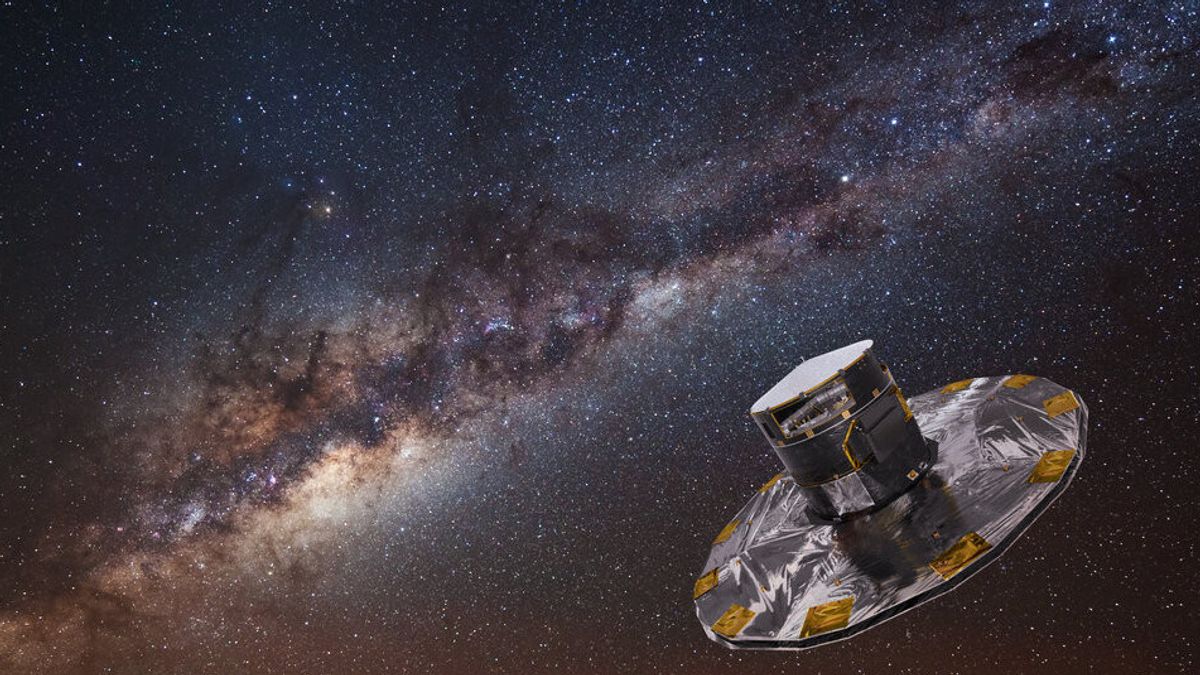JAKARTA - Astronomers managed to find a new exoplanet HIP 99770 b, but this time they used a new breakthrough that was more sophisticated, which made it easy to detect the world away to be close.
Based on data obtained from the Gaia spacecraft, the European Space Agency's (ESA) stellar mapping allows astronomers to image giant exoplanets using the Japan Subaru Telescope.
Most of the exoplanets have been discovered by indirect methods. That is, the planet is concluded to exist because of its influence on its parent star. Whereas in direct imaging, the telescope actually sees the planet.
Astronomers have detected more than 5,000 exoplanets using indirect means, only about 20 have been imaged directly.
This method is done so that planets can be seen with current technological levels, they must be separated away from their parent star and much more massive than Jupiter, the largest planet in the Solar System.
"We want a different strategy," said astronomer Thayne Currie of the Japan National Astronomical Observatory (NAOJ), Hilo, Hawaii, and the University of Texas-San Antonio, quoted Monday, April 17.
Currie and her partner switched to Gaia's mission to find a star that was really swaying in the sky. In particular, they use the Hipparcos-Gaia Acceleration Catalog.
This catalog combines data from Gaia with previous ESA stellar mapping missions, Hipparcos, to provide a 25-year baseline for comparing the exact position of the star. Measuring the star's position in the sky is known as an astrometr term.
From this database, astronomers identify a number of stars that appear to be changing positions in the night sky in a way that shows they are each orbited by a giant planet.
Furthermore, astronomers turned to the NAOJ Subaru Telescope in Mauna Kea, Hawaii, and made observations in July and September 2020, as well as May and October 2021.
They use the Subaru Coronagraphic Extreme Adaptive Optics (SCExAO) telescope instrument paired with the Coronagraphic High-Resolution Imager and Spectrograph Instrument (CHARIS), astronomers quickly capture an exoplanet.
The newly discovered planet, HIP 99770 b has about 16 times Jupiter's mass in the Solar System, and orbits stars nearly twice as massive as the Sun.
Although the planet's orbit is more than three times larger than Jupiter's orbit around the Sun, it receives nearly the same amount of light as Jupiter's as its parent star is much more luminous than the Sun.
"This gives a new way forward to finding more exoplanets, and characterizing them in a much more holistic way than we could have done before," Currie said.
This is because the method of direct and indirect detection provides different information about a planet. Direct imaging can provide excellent constraints on the temperature and composition of the planet.
Meanwhile, indirect methods yield excellent mass measurements and orbital characteristics of planets, especially when combined with planetary position measurements from direct imaging.
Gaia's data combination with images from Subaru gives the best astronomers from both worlds. And this is just the beginning. Now, astronomers know the planet exists and is visible, later other telescopes can take the task of analyzing its light further.
"The discovery of the planet will result in dozens of further studies," said Currie.
There will even be more discoveries than this method. HIP 99770 was one of the first stars to be observed from the Gaia candidate.
Currently, Currie and colleagues are analyzing data from about 50 other stars and what they have seen makes them promise more discoveries to be made soon.
(HIP 99770 b) is proof of this new strategy to find an imageable planet that will be much better in the next five years, "explained Currie.
The English, Chinese, Japanese, Arabic, and French versions are automatically generated by the AI. So there may still be inaccuracies in translating, please always see Indonesian as our main language. (system supported by DigitalSiber.id)













